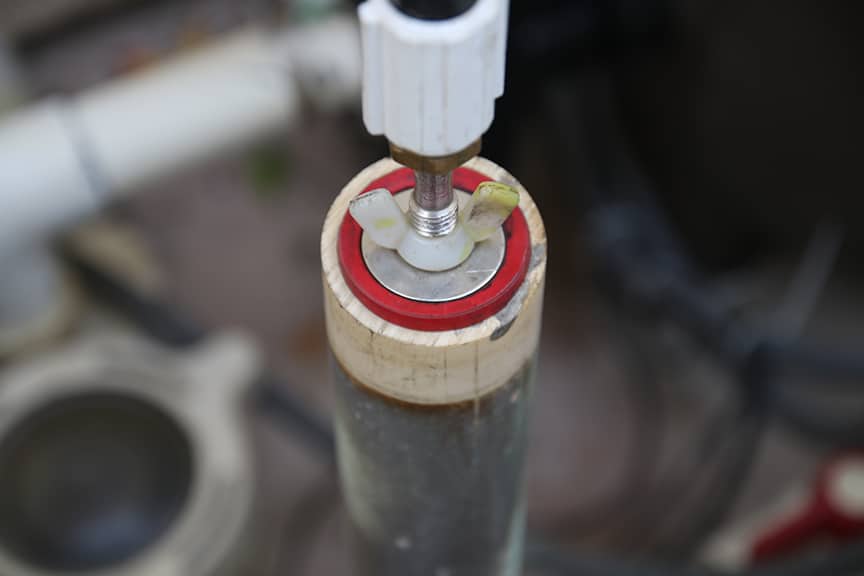(818) 436-2953

Pressure Testing For Leaks Should Be Your Last Resort
When pipes form leaks underground, under concrete or under solid surfaces, we have multiple techniques for locating the exact area where the leak occurs. Being precise is important to reduce all invasive techniques of repair, and finding the leaks can be done without invasive or destructive methods. Because of this, we use pressure testing for leaks as the last resort for finding those leaks.
The general rule of thumb is that swimming pool leaks occur within a 3 foot radius of the pool itself. For getting directly on top of these leaks, LeakTronics has created equipment with highly sensitive hydrophones that are able to get inside lines and find those leaks with extreme accuracy, and non-invasive techniques.
When we suspect a leak is in the plumbing, before we start breaking concrete to find the leak, we listen at return fittings to hear the leak. If we do identify the sound of a leak at a return fitting, we can use the Pipe Mic to get inside the line and listen more intently for its precise location. Using the Push Mic, we can do more than just hear the leak, we can send a 512 hz. signal to the head of the mic and use the FLASH Stick to find its location underground. For long runs of pipe, we can use the FLASH Reel and the FLASH System to find where the leak is, especially if pipes travel long distances away from the pool underground.
However, because 95% of all pool leaks occur within a 3 foot radius of the pool, we can use other methods to find the leak. Pressure testing for leaks, however, should always be your last resort
Starting with the static pipe test, we assure all equipment is off, and the pool is still. By inserting cane plugs into the return fittings, one with a small pinhole in the center, we can use dye to test if the pipe is in fact ingesting water. When we squeeze dye in front fo the hole in our cane plug, if the dye is pulled into the hole, we can confirm that the pipe itself does have a leak and is pulling water from the pool to supply the area where the leak is taking place.
Knowing in fact that we do have a leak, the Push Mic is capable of traveling up to ten feet inside the return line. When we hear the leak at its loudest point, we can use the FLASH Stick to find where that mic head is and know where repairs need to be made.
There will be times when a pipe needs to be pressurized with bursts of air and water to create the boiling sound in that leak we need to hear. When we do this, we use a DeckPlate or Soil Probe to hear that sound underground. This, however, involves isolating the pipe and potentially cutting it at the equipment to be able to create pressure in the line. Because this is invasive and requires follow-up repair, we use this technique as the absolute last resort for finding leaks.
This is how we perform a Static Pipe Test:
This is how we use the Push Mic:
This is how we perform a proper pressure test as the last resort for finding leaks in pool plumbing:
Learn more about using LeakTronics professional Swimming Pool Leak Detection Equipment by visiting https://leaktronics.com or visit the LeakTronics YOUTUBE page for regular video updates.